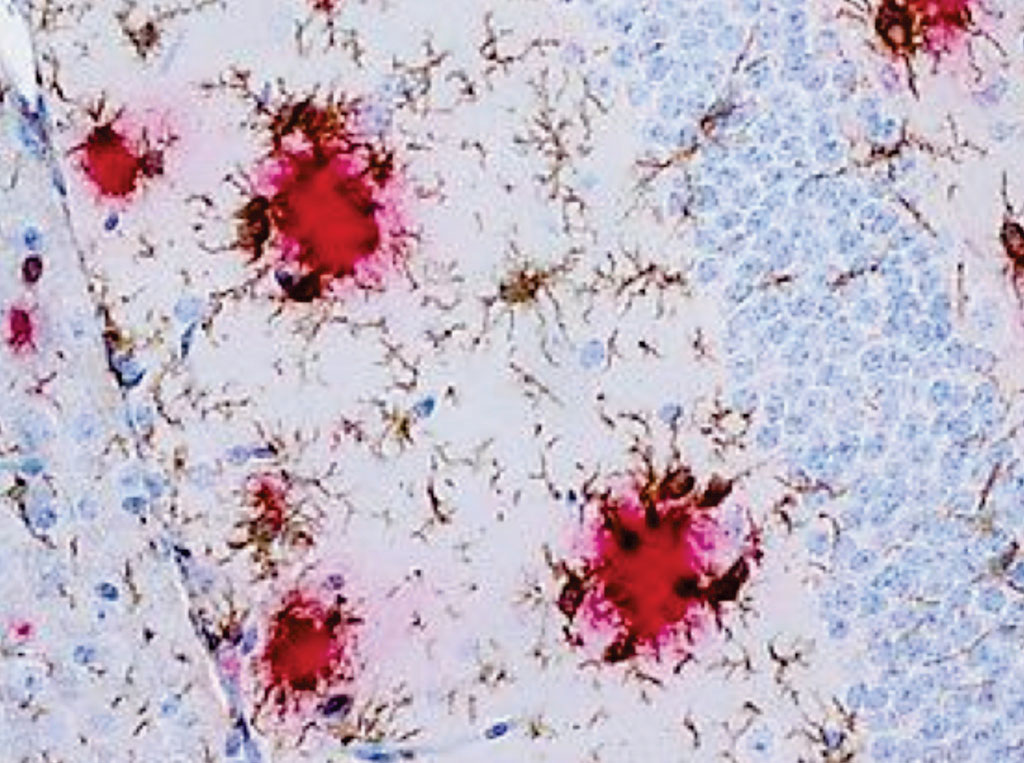Early Signs of Alzheimer's Detected in Cerebrospinal Fluid
By LabMedica International staff writers
Posted on 29 Dec 2016
An early immune response has been found in individuals with a genetic predisposition to Alzheimer's and their brains showed abnormal immune reactions as early as about seven years before the expected onset of dementia.Posted on 29 Dec 2016
Emerging evidence supports a role for innate immunity and microglia in Alzheimer’s disease (AD) pathophysiology. However, no marker related to microglia has been included in the temporal evolution models of AD. Triggering Receptor Expressed On Myeloid Cells 2 (TREM2) is a transmembrane protein involved in innate immunity and is selectively expressed by microglia and genetically linked to AD and other neurodegenerative disorders.

Image: A histology of immune cells of the brain, the microglia (brown), cluster around the beta-amyloid deposits (red) in an Alzheimer’s disease model (Photo courtesy of Frank Heppner/ Charité).
Scientists at the German Center for Neurodegenerative Diseases (Munich, Germany) have measured the amount of a secreted form of TREM2 (sTREM2) in cerebrospinal fluid (CSF) as a surrogate marker for microglial activation. Participants in the study were a unique cohort of 127 subjects with autosomal dominant AD and 91 healthy siblings. They were on average 40 years old and the vast majority showed no symptoms of dementia or had only minor cognitive impairments.
The team found that CSF’sTREM2 was abnormally increased five years before the expected onset of symptoms in the AD patients. They observed that CSF sTREM2 increased in mutation carriers (MCs) compared to non-carriers five years before the expected symptom onset and this difference remained significant until five years after the expected symptom onset. Changes in CSF’sTREM2 occurred after alterations were observed in markers for brain amyloidosis and neuronal injury.
Michael Ewers, Dipl. Rel. Paed., MPH, Dr. PH, a professor and a senior author of the study, said, “There are many similarities between the inherited form of Alzheimer's disease and the so-called sporadic variant, which is far more common. TREM2 levels could therefore be a biomarker used to track immune activity while Alzheimer's is progressing, irrespective of whether the disease is genetic or not. TREM2 may also serve as a therapeutic marker to monitor drug response.” The study was published on December 14, 2016, in the journal Science Translational Medicine.
Related Links:
German Center for Neurodegenerative Diseases













